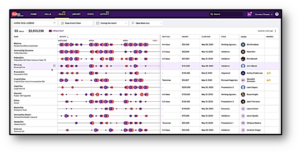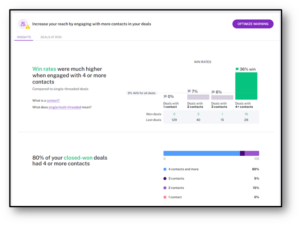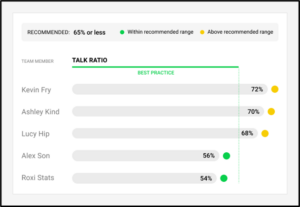For decades, while the theory of performance management has been studied, written about, and improved “on paper,” the actual process has made little progress. Most often, it is still largely a paper-based, period-bound procedure with inputs limited to subjective observations by some combination of three sources: the employee themselves, the supervisor responsible for the review, and perhaps feedback from a few colleagues.
Many experts believe that it will take the infusion of some aspects of artificial intelligence (AI) to truly revolutionize the science of performance management (PM). They cite three main goals as most important for the initial incorporation of AI into PM:
- • The ability to collect information seamlessly from multiple sources.
- • The ability for managers to extract meaningful insights from performance metrics in real time, and
- • The minimization (ideally, the elimination) of various psychological biases associated with the performance management cycle.
AI has the ability to deliver on all three of these game-changing approaches. To what extent has it already done so? To answer that question, WSR Co-Managing Editor Bob Greene had to look no further than his own company, Ascentis. Ascentis uses a software platform called Gong (www.gong.io) for “sales optimization.” He interviewed Ascentis’ Director of Presales, Monica Lloyd, and discovered that some of the best currently available AI platforms for performance management aren’t necessarily being designed or delivered by HR services or Human Capital Management companies!
What is Gong and Why Should HR Professionals Care?
On its website, Gong characterizes its offering this way: “We created the Revenue Intelligence category to enable leading revenue teams to get the unfiltered truth about their customer interactions, their deals, and transform the way they go to market…” This leads the reader to believe that the product provides value solely or primarily in the CRM/Sales category of ERP software, operating as one of the many “add-ins” and extensions to larger Sales platform dominators like salesforce.com, Oracle, MS Dynamics, and smaller players like SugarCRM and mondayCRM. But according to Monica Lloyd, at Ascentis, Gong has had a profound impact on performance management of her team of Solutions Consultants.
Lloyd reports that in addition to analyzing sales practices to determine which ones are most likely to lead to sales success, and providing key insights into sales pipeline data, Gong delivers an unprecedented amount of team performance metrics on a real time basis. She uses these metrics in team training, one-on-one employee coaching, and in completing periodic performance reviews. Beyond that, a feature called Gong Insights can provide valuable feedback to the extended organization, including product development and the executive team.
The Gong data collection model begins with integrations to Zoom or other presentation collaboration platforms (e.g., webex, gotomeeting), salesforce.com or other primary CRM platform software, e-mail servers, and (soon, according to Gong) mobile phone communication tools like texting. These multi-sourced data integrations act as omnipresent, objective “listeners,” able to report back key salesperson behaviors without going through a human “filter.” They can listen for best practice sales skills preconfigured by the software designers, as well as additional triggers established by the user during implementation.
As just one example, Lloyd explains, imagine a Sales Director with a team of 12 sales consultants. While she tries to monitor as many online sales presentations as she can, for the recent presentation to Acme Corp, she was unavailable and relies on a report by another sales supervisor who was on the call. He reports that the Sales Director’s team member “really knocked it out of the park! He addressed all the client’s concerns and delivered all our value propositions well.” But less than a day later, she receives a full report on the sales call from Gong. It offers automated metrics like the split of time spent speaking by the client vs. her sales consultant, and even repetitive measurements of the tiny intervals of time after the client finishes a question before her salesperson starts answering. The report concerns the Sales Director, because it shows a very high level of talking by the sales consultant (vs. listening), even during the discovery phase of the call, and that he sometimes cut questions off and began his answers before the questioner was finished composing his or her question. The Sales Director knows that, even if this sales call was successful and turns into a sale, that result might be more due to good fortune than by design. She concludes that her sales consultant needs some re-training on key consultative sales behaviors. The independent and objective AI reports by Gong offered different and generally more reliable information than did the subjective views of her management colleague, and according to Lloyd, this is part of the real value of AI in Gong.
AI Delivery in Gong
As previously mentioned, AI delivery in Gong begins with a series of preconfigured KPIs and performance monitors included with initial setup. These are based on commonly accepted sales best practices:
- • Client responsiveness: It’s an axiom of sales forecasting that salespeople will, on occasion, fail to see the likelihood of success in one or more of their opportunities realistically. Where a prospect fails to respond after multiple reach-outs by the vendor, this is a sign that an opportunity may be in trouble. Gong offers a dashboard which can be sorted and filtered by opportunity size, team, business line, etc. which tracks each sales cycle historically. (See Fig. 1.) In this example, the purple circles represent vendor-initiated communications (email, phone call, zoom meeting) and the red ones indicate prospect responses. The size of the circle matters; the more contact back and forth, the bigger the circle. If an opportunity were to show, for example, three or more consecutive purple reach-out calls, with no response, the Gong analytics warn the Sales Manager that perhaps the likelihood of close assigned by the rep is too “rosy.” But as important, from a performance management perspective, repeated such situations for a single salesperson is an AI-delivered warning to the salesperson’s supervisor that more coaching or training of proper forecasting techniques may be needed.

- • Number and timing of client contacts/appeals: Gong “Insights” also include some lesser known best practices, and/or ones derived from a user sales organization’s overall experience. For example, Gong’s sample reports include an alert based on the number of contacts within a prospect’s organizations being engaged by the sales team. (See Fig. 2.) This alert shows that the Gong user organization’s win rates were almost six times higher on average when the sales team actively engages with four or more individuals within the prospect’s organization.

- • Active listening skills: The ancient Greek philosopher, Epictetus, once said: “We have two ears and one mouth so that we can listen twice as much as we speak.” Most experts in sales best practices would agree wholeheartedly. Employing active listening to truly hear and understand the customer’s needs before presenting key aspects of a product’s solution to address those needs is a fundamental best practice. To achieve this goal, it would be great to have a “robot” listening in to every sales call and presenting managers with continuous statistics analyzing the proportion of time during that call that the salesperson (or team) spent speaking. Gong does just that. (See Fig. 3.)

- • Keyword monitoring and reporting: The Gong application can dive deep into detailed salesperson behavior to facilitate the continuous feedback loop. According to Lloyd, Gong does an excellent job at identifying “wishy-washy” (i.e., imprecise, vacillating or ineffective) sales speech. It does so by using both a long list of preconfigured words/phrases to listen for, as well as additions that a user may add to that list.
Performance Management AI applications should make their data reporting and metrics easy to document, share with others and include in coaching, feedback cycles and periodic reviews, and Lloyd indicates that this is one of Gong’s strongest capabilities. After each sales call, it creates a “map” of the entire conversation, notating such issues as who was speaking when, what topics were being discussed, etc., and permitting sharing of the analysis (by URL link to a cloud recording), unlimited playback, and bookmarking to a particular point in time in the conversation. (See Fig. 4.) Lloyd reports that on many occasions, she has circulated such recording links to her entire team with comments like, “Take a listen to how your teammate, John, expertly explained our software’s ability to [problem solve] at 13:40 in the attached recording,” or (in direct coaching) “Darren, I think you can improve your listening skills on [client’s topic of concern] if you listen to your exchange with the client at 22:20 in the attached recording.”

What Gong Tells Us About Successful AI Performance Management Applications
As she reviews the overall suite of capabilities of the Gong platform, and specifically those she leverages to manage the performance of her team members, Lloyd believes that their “secret sauce” is that these performance management capabilities grow naturally out of the industry domain Gong has designed them for – sales. Gong wouldn’t be in a position to deliver the same performance management insights for non-sales related occupations. The best practice architecture built into the Gong software that delivers such value for sales occupations wouldn’t be able to do so for, say, healthcare workers, or call center reps, or hospitality employees.
On the other hand, there are similarly excellent AI-driven performance optimization applications for many other industries. To be most successful, those applications must integrate with their own industry-specific applications to derive their data, putting them in a position to compare performance to industry-derived best practices. For example, a well-optimized AI performance application for patient-facing staff in a healthcare setting would need to integrate with patient records in an EHR system (electronic health records, such as EPIC), pulling dozens of relevant metrics like time spent per patient per shift, timeliness of interventions, quality of charting and patient documentation, and ultimately, the quality of patient outcomes. All that would be completely different than, say, the AI needed to evaluate the performance of long-haul truck drivers.
The Future of AI in Performance Management (and Some Practical Tips)
What does this mean to HR professionals seeking to incorporate AI into their performance management processes? For now, at least, it is unrealistic to expect the major HCM software/service providers, or even the point solution Talent Management/Performance Management providers, to be able to develop their own AI solutions for Performance Management – there are simply too many occupation descriptions in too many disparate industries for any generalized Performance or even multi-module HRMS platform to become expert in all of them. This means that when seeking out new AI software to assist in Performance Management, smart organizations will quickly become familiar with the AI point
solutions that offer performance capabilities.
Since the vendor vetting process for Performance Management AI (“PM/AI”) products will be somewhat different than, say, the process for selecting a new HRMS, here are some important questions to ask vendor candidates to begin the process:
a) Thinking of the PM/AI domain as having two dimensions, a vertical dimension of industry (health care, manufacturing, logistics, hospitality, etc.) and a horizontal dimension of occupation groups (sales, customer service, financials/accounting, HR, etc.), which of these specialties had the vendor designed for and embedded best practice metrics? [Be careful of vendors that claim an overreach of total expertise in too many of these specialties; make the vendor present hard evidence of each specialization’s content and best practices.]
b) With what software systems does the vendor maintain standard integrations for its data input?
c) Do these integrations deliver data/metrics/KPIs to the PM/AI system on a real time basis? How long is the delay, if any?
d) Does the vendor employ both preconfigured AND custom, client-designed KPIs and trend analyses? [Examine the pre-configurations carefully to determine how much value the new PM/AI system will deliver on initial launch.]
e) How are collected data points statistically validated? Is there a minimum number of results required on a metric before it is recognized by the software as a trend or most common practice?
Conclusion
The area of Artificial Intelligence for Performance Management is in its very early stages, but showing great promise. Like many past emerging areas of human capital management, the highest value delivery in PM/AI is currently being seen in point solutions like Gong, with the expectation that this functionality may move into “mainstream” HR suites in the future after the market need for them is better established. In emerging technology markets, where the “net” must necessarily be thrown wide, HR professionals are well advised to invest some extra due diligence in the software evaluation process.





